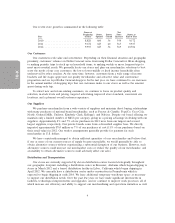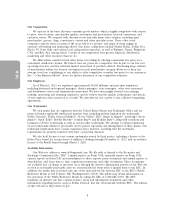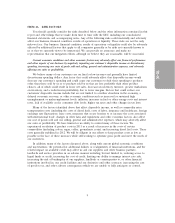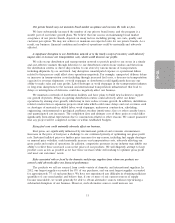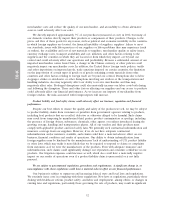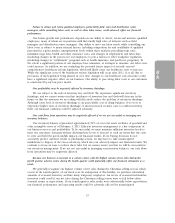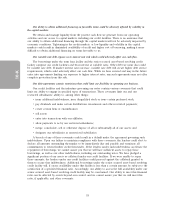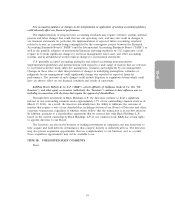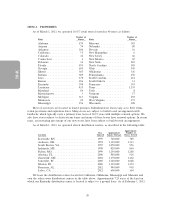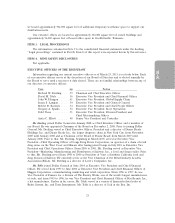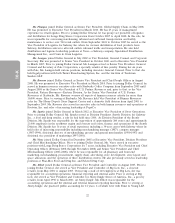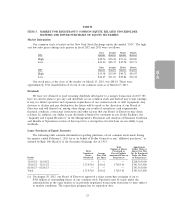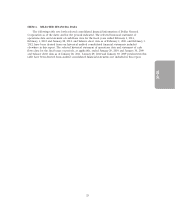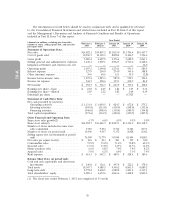Dollar General 2012 Annual Report Download - page 95
Download and view the complete annual report
Please find page 95 of the 2012 Dollar General annual report below. You can navigate through the pages in the report by either clicking on the pages listed below, or by using the keyword search tool below to find specific information within the annual report.
10-K
markdowns, especially in seasonal merchandise. Lower than anticipated sales in the Christmas selling
season would also negatively affect our ability to absorb the increased seasonal labor costs.
Our current insurance program may expose us to unexpected costs and negatively affect our financial
performance.
Our insurance coverage reflects deductibles, self-insured retentions, limits of liability and similar
provisions that we believe are prudent based on the dispersion of our operations. However, there are
types of losses we may incur but against which we cannot be insured or which we believe are not
economically reasonable to insure, such as losses due to acts of war, employee and certain other crime,
some employment-related or other class actions, and some natural disasters. If we incur these losses
and they are material, our business could suffer. Certain material events may result in sizable losses for
the insurance industry and adversely impact the availability of adequate insurance coverage or result in
excessive premium increases. To offset negative insurance market trends, we may elect to self-insure,
accept higher deductibles or reduce the amount of coverage in response to these market changes. In
addition, we self-insure a significant portion of expected losses under our workers’ compensation,
automobile liability, general liability and group health insurance programs. Unanticipated changes in
any applicable actuarial assumptions and management estimates underlying our recorded liabilities for
these losses, including expected increases in medical and indemnity costs, could result in materially
different expenses than expected under these programs, which could have a material adverse effect on
our financial condition and results of operations. In addition, we are evaluating the potential future
impact of the comprehensive healthcare reform legislation, which may cause our healthcare costs to
increase. Although we continue to maintain property insurance for catastrophic events at our store
support center and distribution centers, we are effectively self-insured for other property losses. If we
experience a greater number of these losses than we anticipate, our financial performance could be
adversely affected.
If we fail to protect our brand name, competitors may adopt tradenames that dilute the value of our
brand name.
We may be unable or unwilling to strictly enforce our trademarks in each jurisdiction in which we
do business. Also, we may not always be able to successfully enforce our trademarks against
competitors, or against challenges by others. Our failure to successfully protect our trademarks could
diminish the value and efficacy of our brand recognition, and could cause customer confusion, which
could, in turn, adversely affect our sales and profitability.
Our success depends on our executive officers and other key personnel. If we lose key personnel or are
unable to hire additional qualified personnel, our business may be harmed.
Our future success depends to a significant degree on the skills, experience and efforts of our
executive officers and other key personnel. The loss of the services of any of our executive officers,
particularly Richard W. Dreiling, our Chief Executive Officer, could have a material adverse effect on
our operations. Our future success will also depend on our ability to attract and retain qualified
personnel and a failure to attract and retain new qualified personnel could have an adverse effect on
our operations. We do not currently maintain key person life insurance policies with respect to our
executive officers or key personnel.
16


